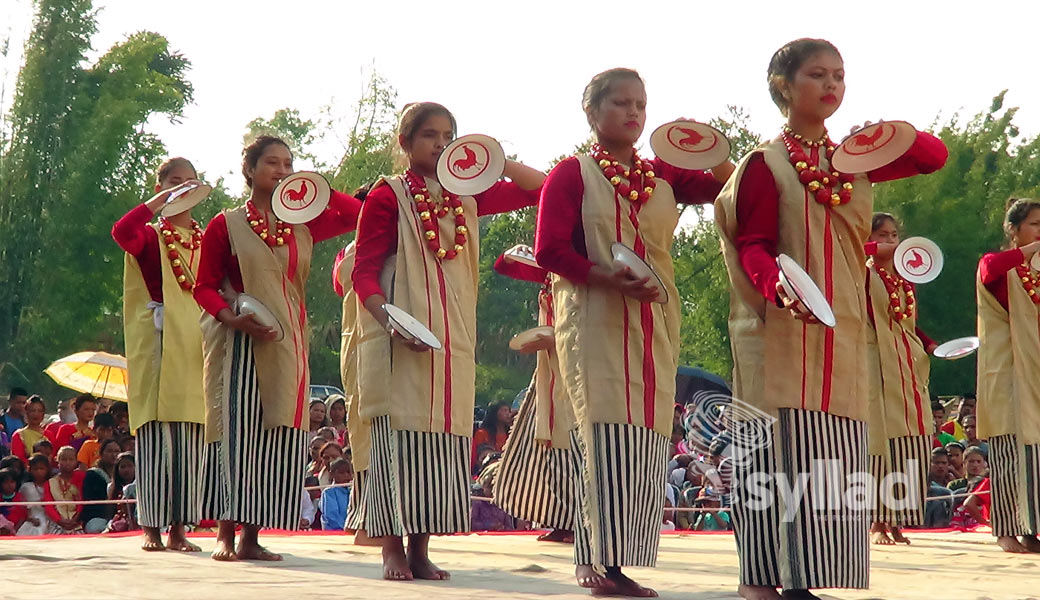Chad Sukra Festival in a nutshell

Almost every culture, both ancient and modern, have some sort of ritual to commemorate the promise and fertility of spring. As for the agricultural communities of the Jaintia people of Jowai, it indicates the time for planting with the annual spring cultural festival called ‘Ka Chad Sukra’.
The cultural fest is celebrated every year in April by the Jaintia or Pnar people of Jaintia Hills from Meghalaya, honouring ‘Ka Bei Rym-aw’ (Mother Nature) for bountiful blessings of the upcoming sowing season.
The past.
Chad Sukra dates back to the Jaintia Kingdom, when the king relocated his court from Sutnga to Jaintiapur, and people from all over the kingdom would travel and perform for the king and his Dalois (ministers) at the start of spring.
During that time, the king’s ministers would entertain him with dancers and performers, the majority of whom were female. However, due to the long distance, the Pnar people’s performance would only be performed by men, and thus the words “Chad Sukra” became known in the king’s court. Though it is unclear why these specific words were used, it could be due to the Pnar people’s fondness for a string instrument called ‘Duitara,’ which is similar to the string instrument called ‘Chikara’ in the North-western kingdom. The name persisted even after the British Empire invaded.
The festival eventually faded from existence during the British rules and was revived in Jowai in April 2006.
What and where?
Today, the Annual Festival of the Pnar people starts with a theatrical show honouring Mother nature, the culture, the traditions and being thankful for God’s blessing. The theatrical shows called ‘Ka Yalehke’ can be of various genres such as drama, comedy, horror, a slice of life and others that are related to the theme set for the performance each year.
‘Ka Yalehke’ is attended by the communities from all over as they gathered in the community hall ‘Yungwalieh’ for the show. ‘Ki Yungwalieh’ are held in high regard because they represent a place where anyone can communicate in order to find clarity, reconnect and affirm a sense of belonging in the community. They also provide a platform for all Jaintia artists to showcase their skills and abilities.
On the second day, a public gathering is held at Loompyrdi Iongpiah Jowai’s Myngkoi Pyrdi, where various cultural dances such as Ka Chad Pliang, Ka Chad Rwai, Ka Chad Pynjaw, Ka Chad Kieh-ke and others from the eight localities are performed. This is followed by a form of an advancing carnival called “Ka Mih Iaw” towards Iawmusiang, in which everyone dances in unison to the music, songs, and dances.
And after?
Following the annual spring cultural festival Chad Sukra, a socio-cultural tradition known as Bamphalar is held during the sowing season.
Chad Sukra and Bamphalar have provided opportunities and benefits to the people of the Jaintia hills by appreciating and displaying the people’s traditional wear; providing a platform for artists to display creative talents; preserving the oral traditions of story-telling and each locality has the potential to raise financial support. Looking back in time, the festival has progressed and will continue to progress alongside the people.

Leave a Reply